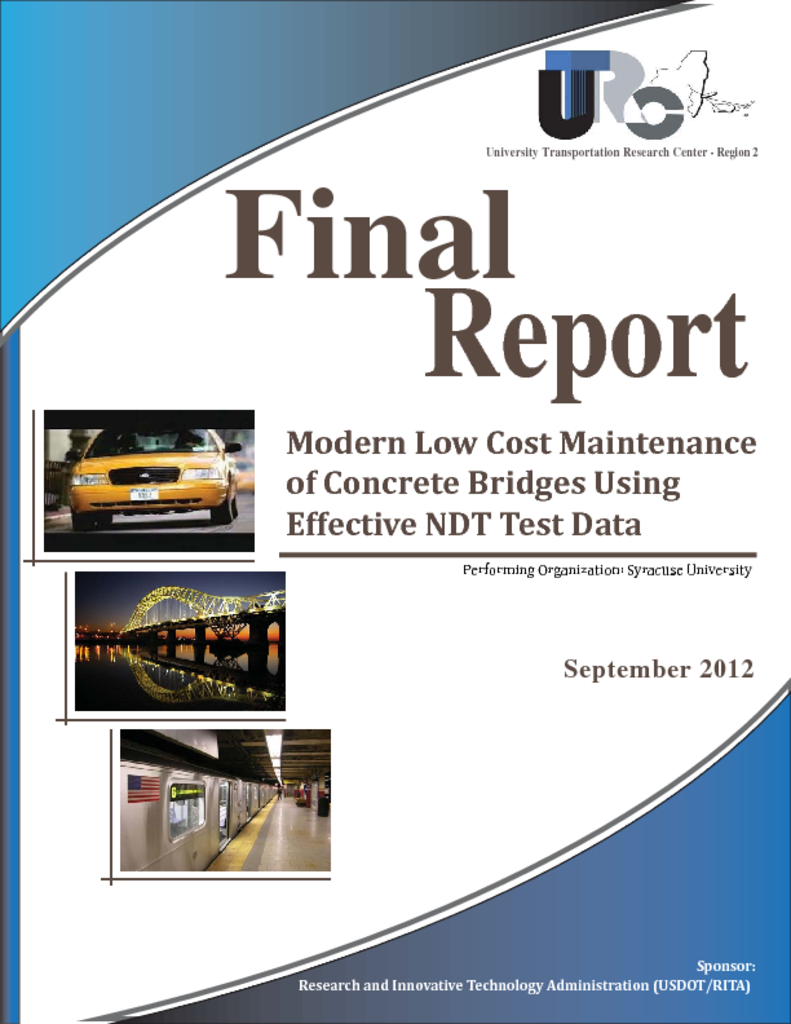According to the U.S. Department of Transportation, as of December 2008, of the 600,905 bridges 72,868 (12.1%) were categorized as structurally deficient (SD) and 89,024 (14.8%) were categorized as functionally obsolete (FO). Despite healthy economy during the period of 1995-2005, the numbers of SD and FO bridges were on the rise. It is very clear that the current bridge evaluation and maintenance policies are not working efficiently. The high numbers of SD and FO bridges should not be allowed to continue to rise. Given the current state of the US economy, smarter bridge management policies should be adopted, as we cannot afford the high cost of conventional maintenance of our huge transportation civil infrastructure. In addition, there is a need for more scientific approach for setting bridge inspection frequency based on safety, chemical and physical condition, design, age of the structure, and engineering judgment.
Practical experience coupled with non-destructive test (NDT) data produce good assessment of bridge condition. The question is how to utilize NDT data to develop a cost-effective preventive maintenance policy for highway bridges. NDT data should not only be used for assessing current condition of bridges, but also to predict its deterioration rate and its future maintenance needs. NDT data of the likelihood of corrosion in a bridge component is a very good indication of its future deterioration rate in the following few years. If implemented, low cost maintenance measures would stop or slow the deterioration rate resulting in lower maintenance cost over the service life of the bridge.
There is fundamental problem with the current NDT/inspection procedures, as they focus on identifying/measuring physical defects/damage through visual inspection complimented with NDTs. Such physical defects may include but not limited to cracking, rust stain, delamination, etc. Physical damage measurement approach has proved to be a very passive, and ineffective in preventing major deteriorations. An alternative approach would be an active NDT chemical measurement approach, which is less expensive and more effective in detecting potential problems before they even start.
This report presents smart use of NDT data to assess the near future service life of concrete bridge components, and its utilization for costeffective maintenance policy, in a limited financial resources environment. The impact of this study enhances the followings: (1) development of better rational for setting maintenance frequency based on condition, (2) development of low-cost preventive maintenance measures for better control of deterioration rate, (3) understanding of financial consequences of delayed maintenance, and (4) reduction of the number of structurally deficient bridges.
In conclusion, the most economical way to maintain existing concrete bridges is by adopting an active preventive maintenance approach, which costs just fraction of the current passive approach. Such an active preventive maintenance approach requires chemical detection of potential deterioration problems before they even start.


